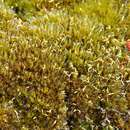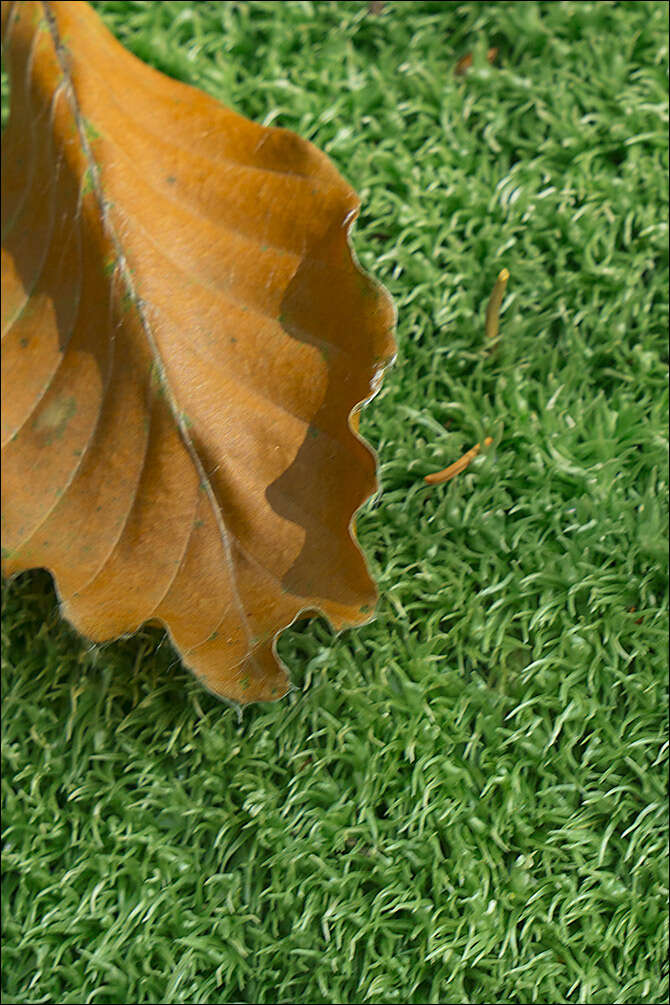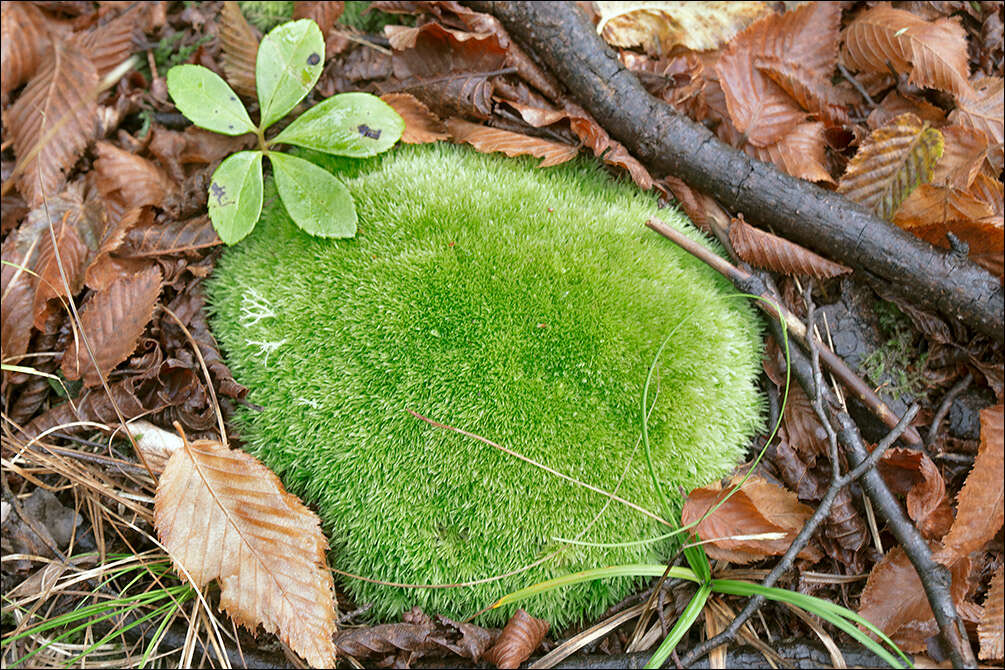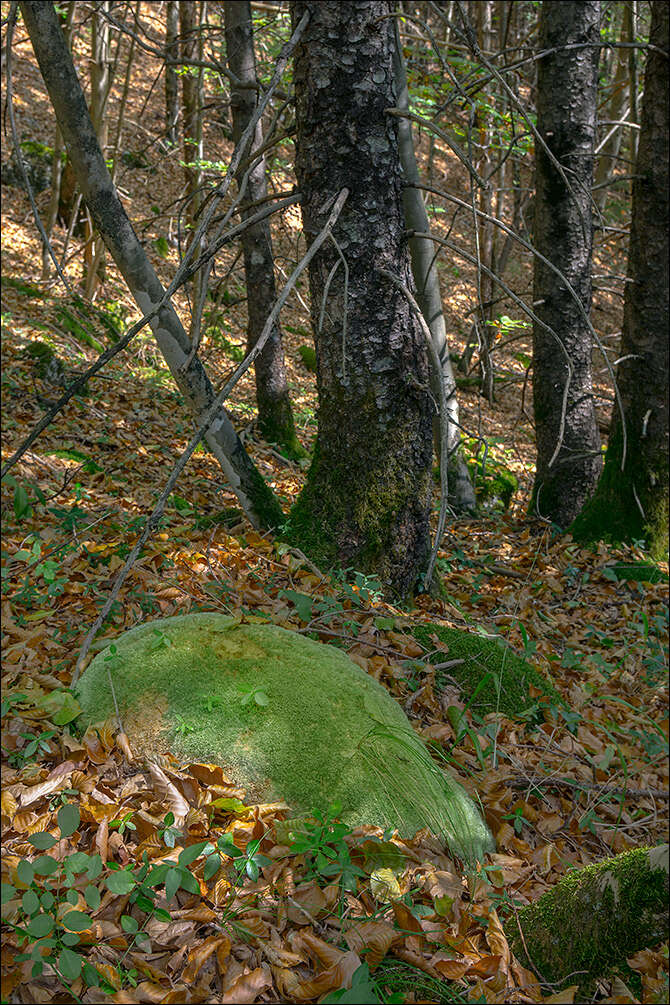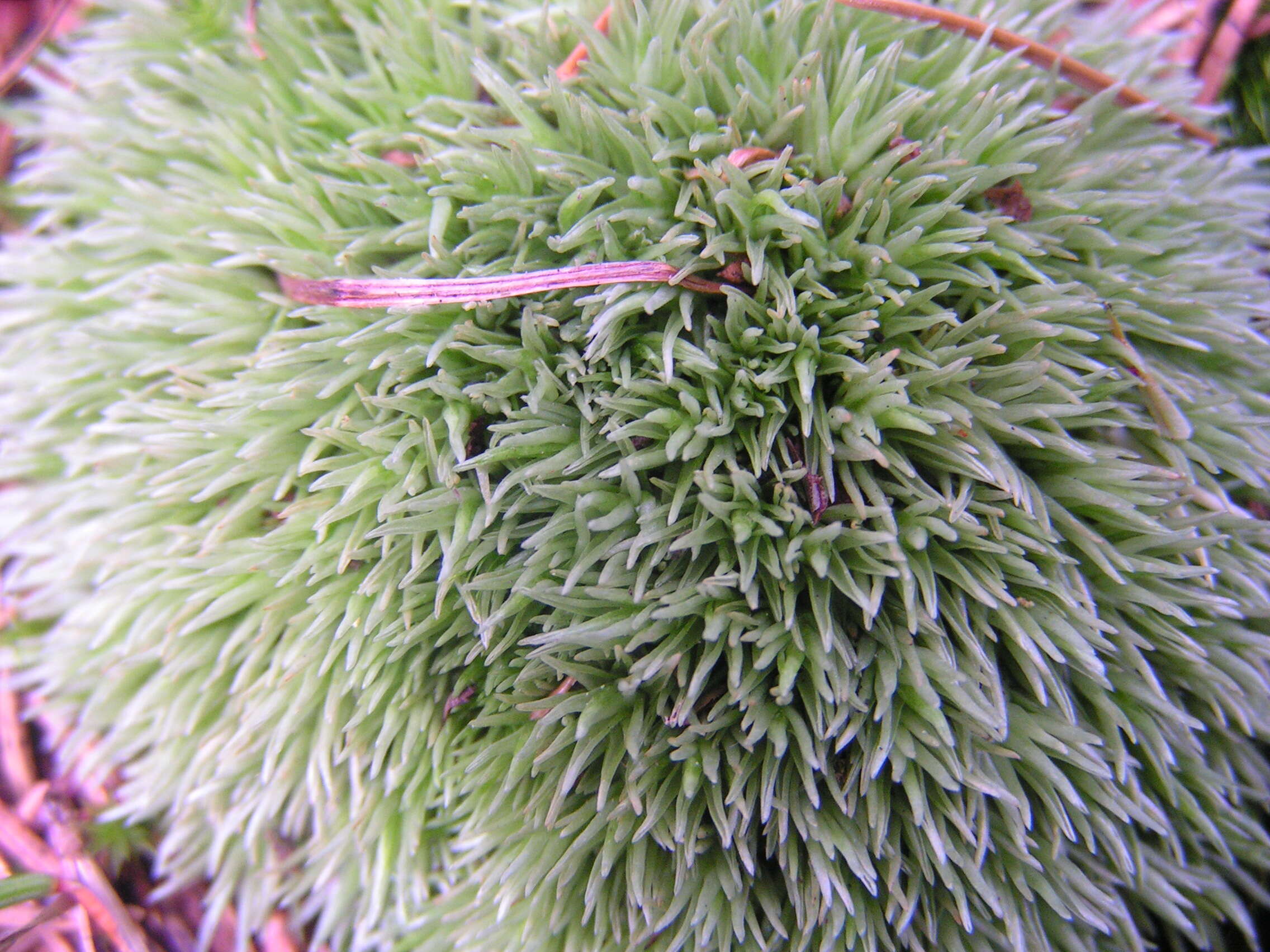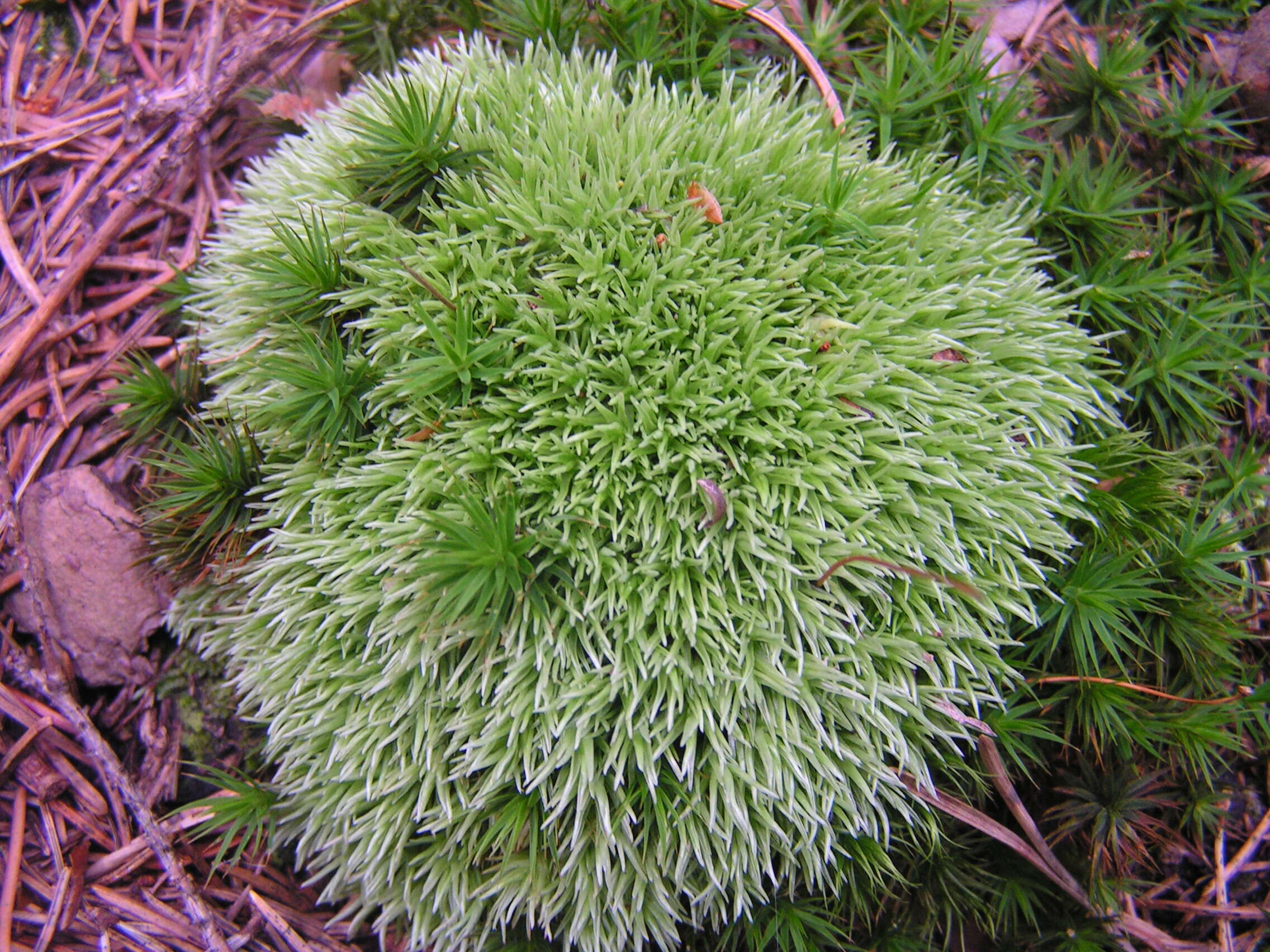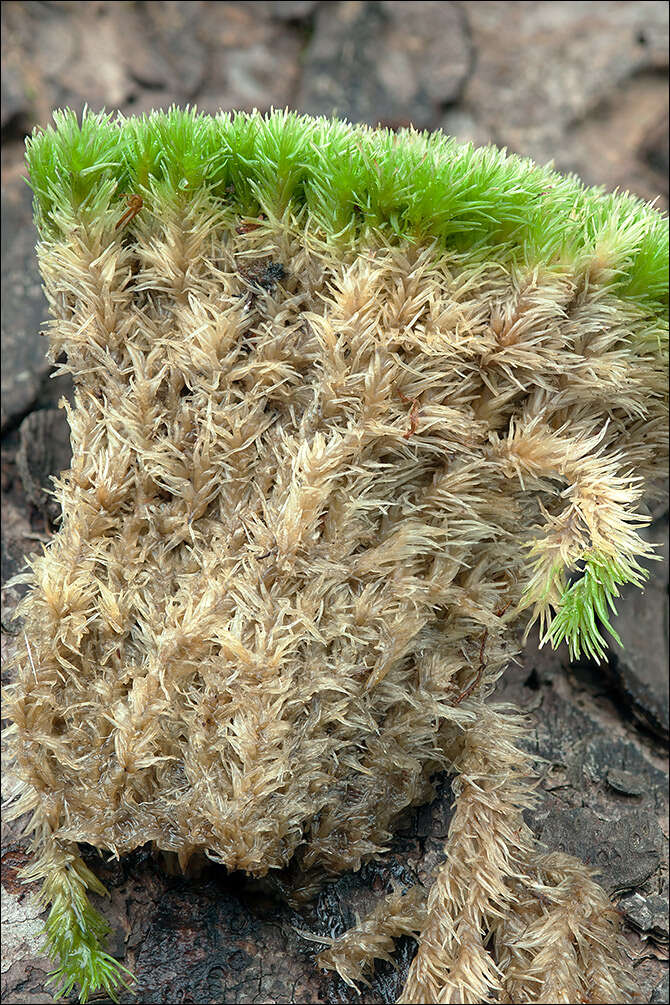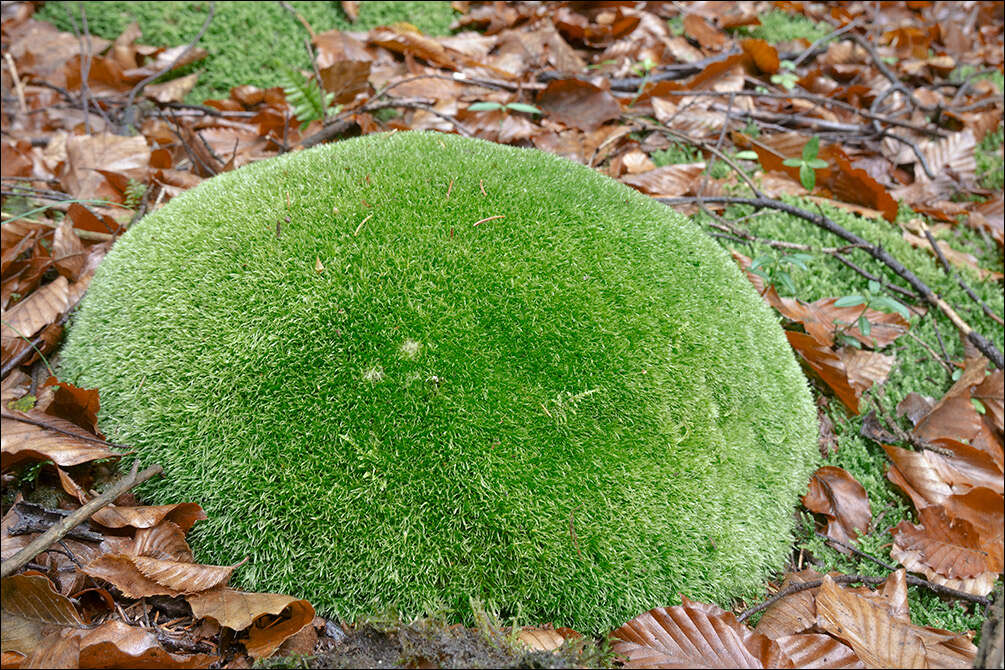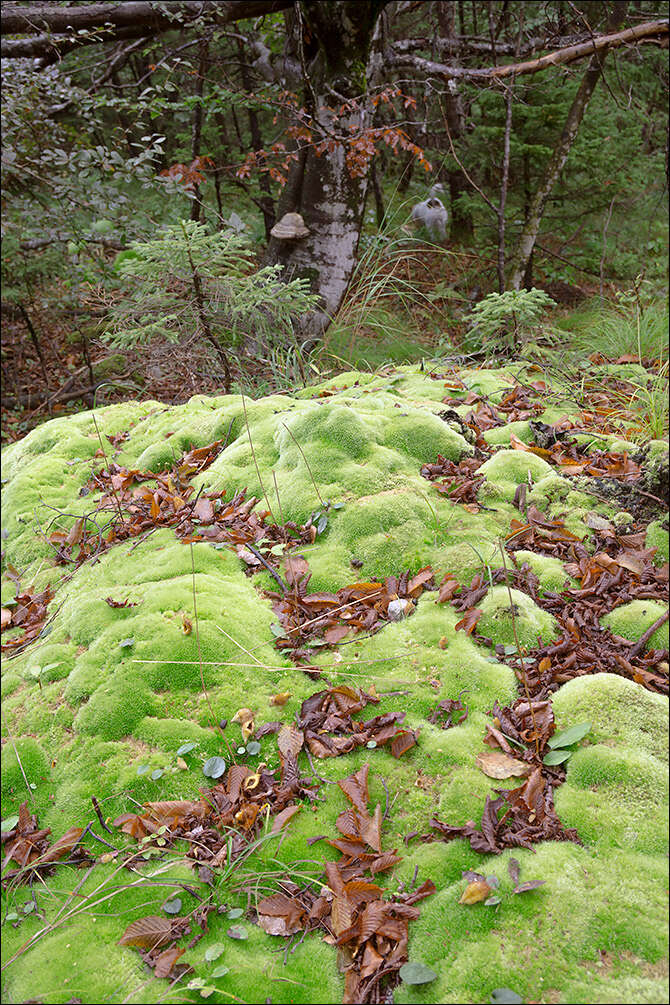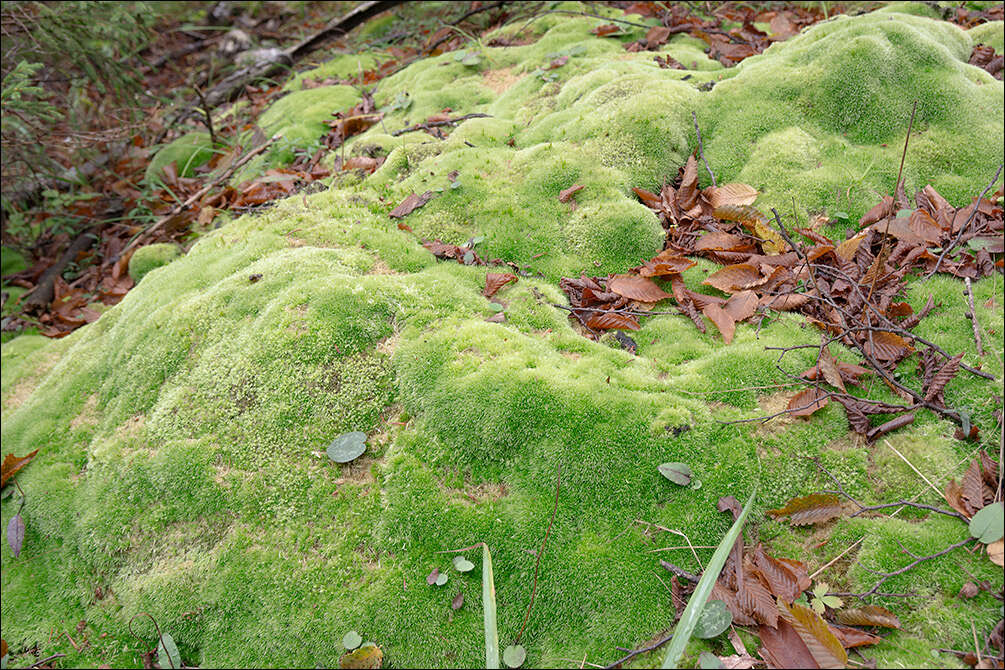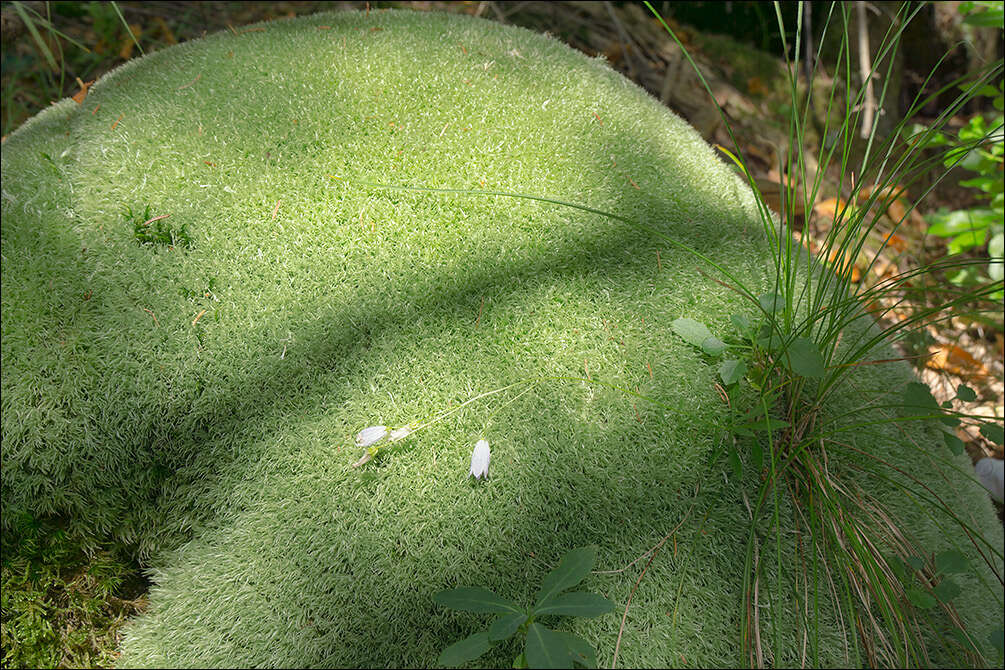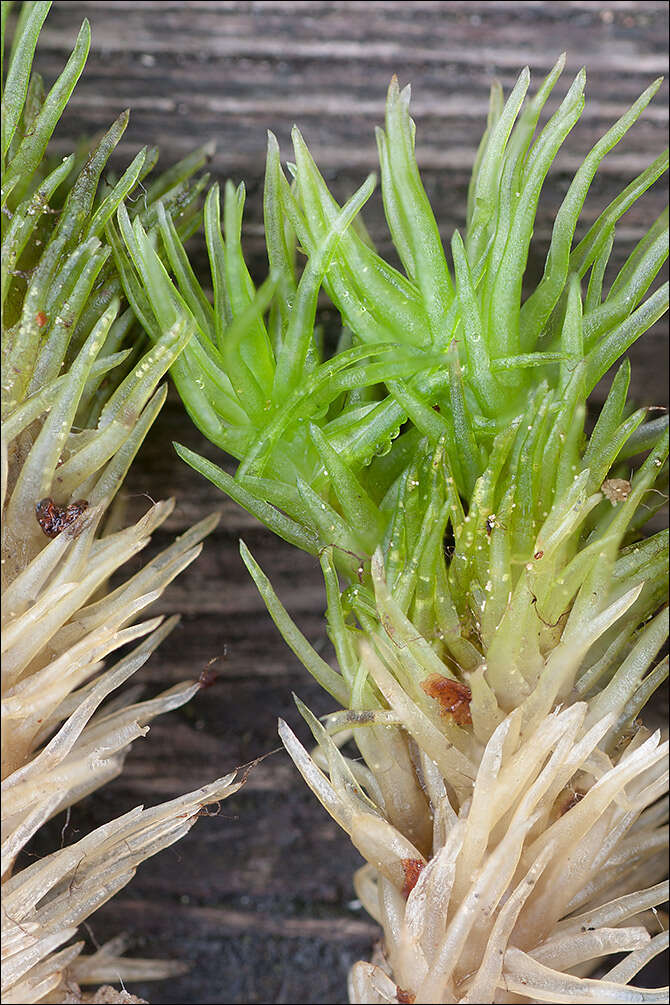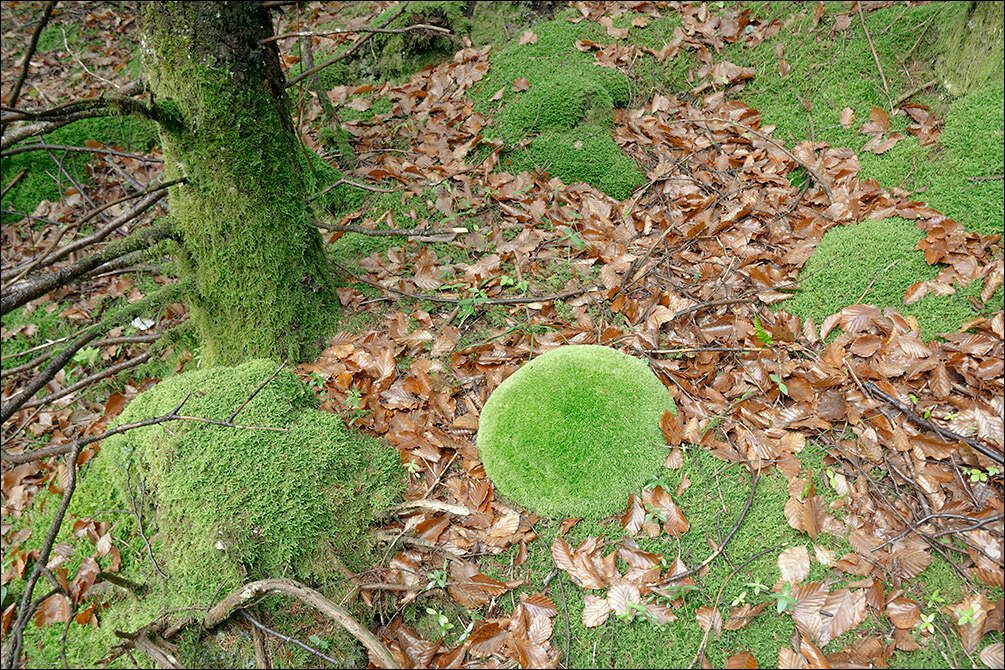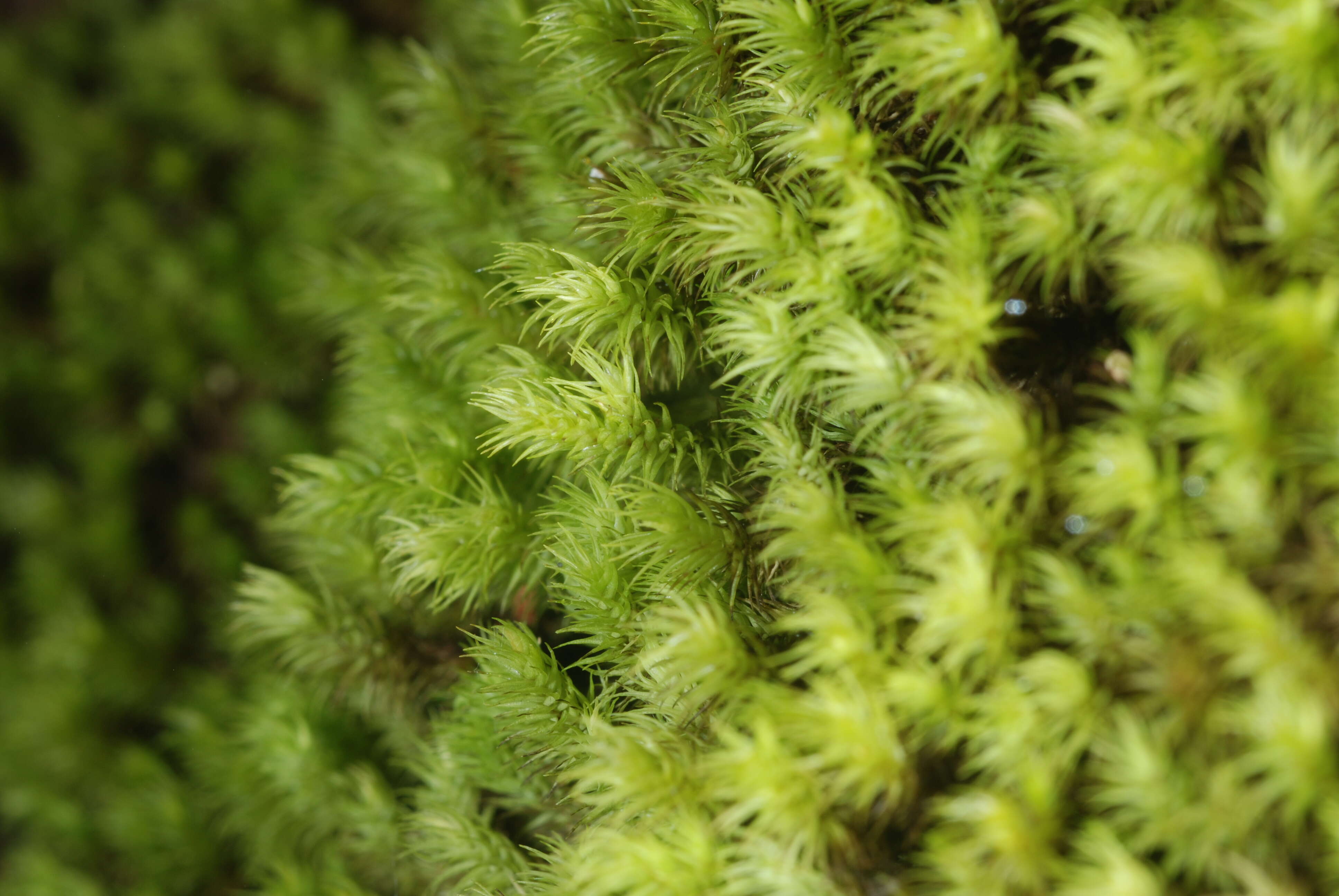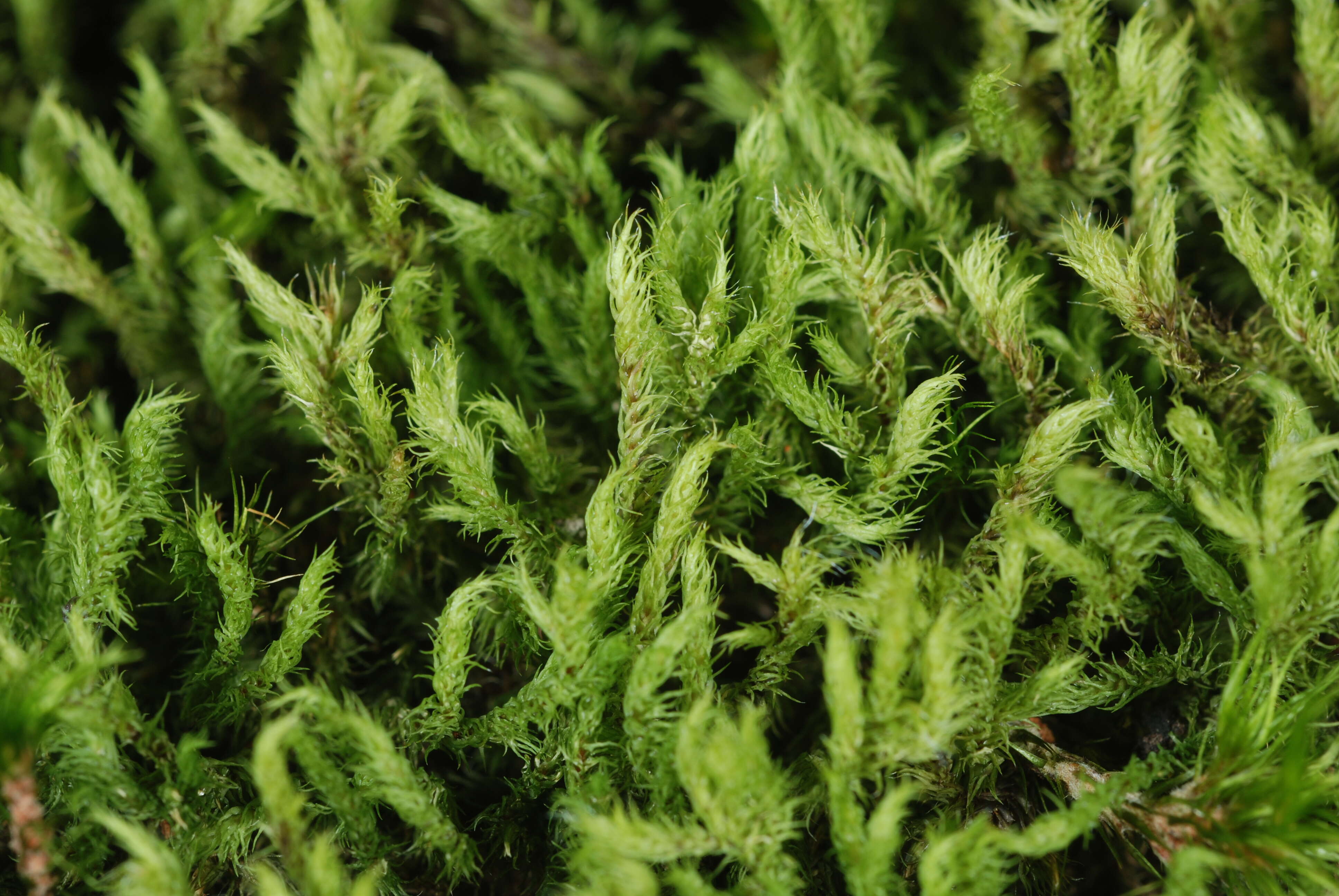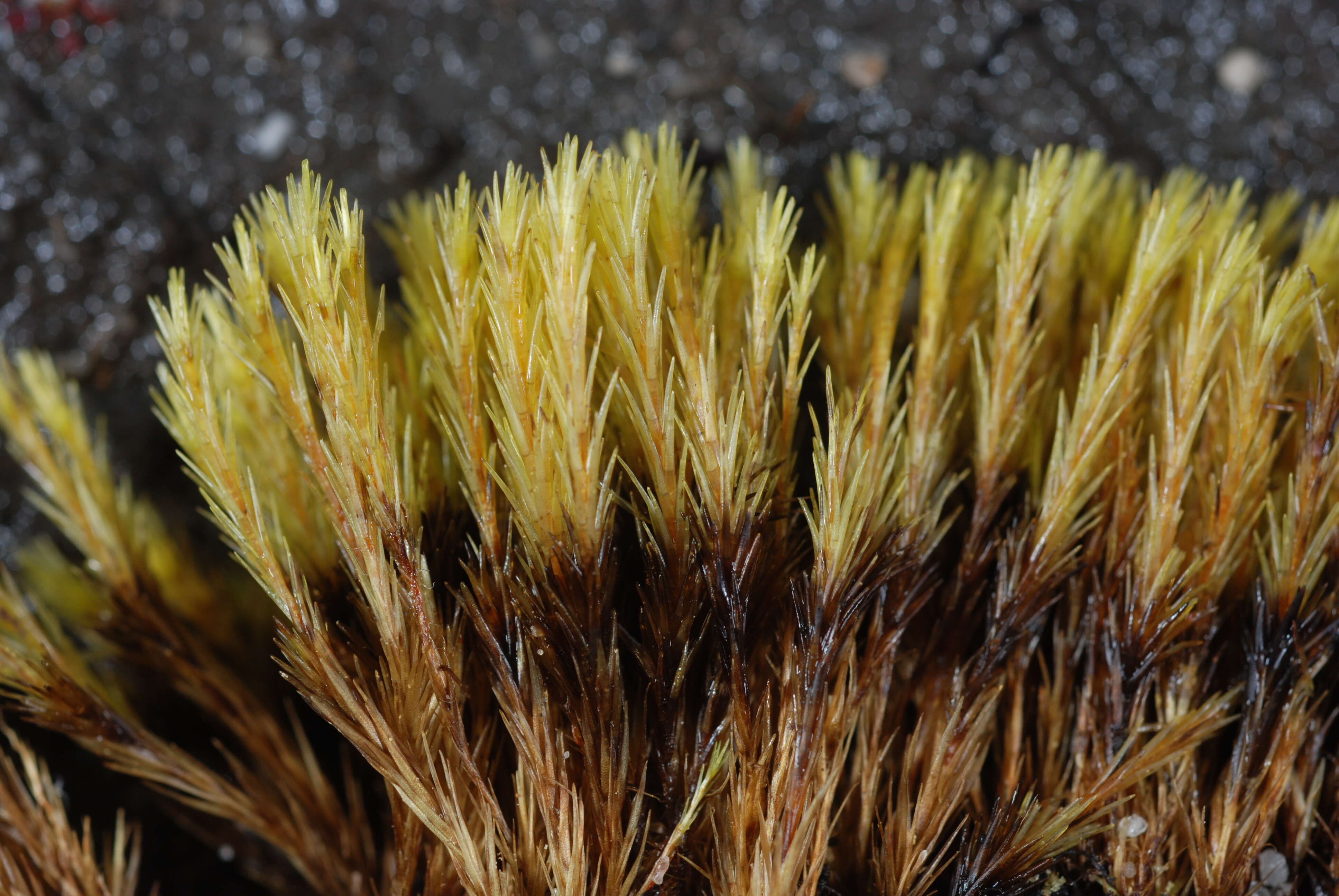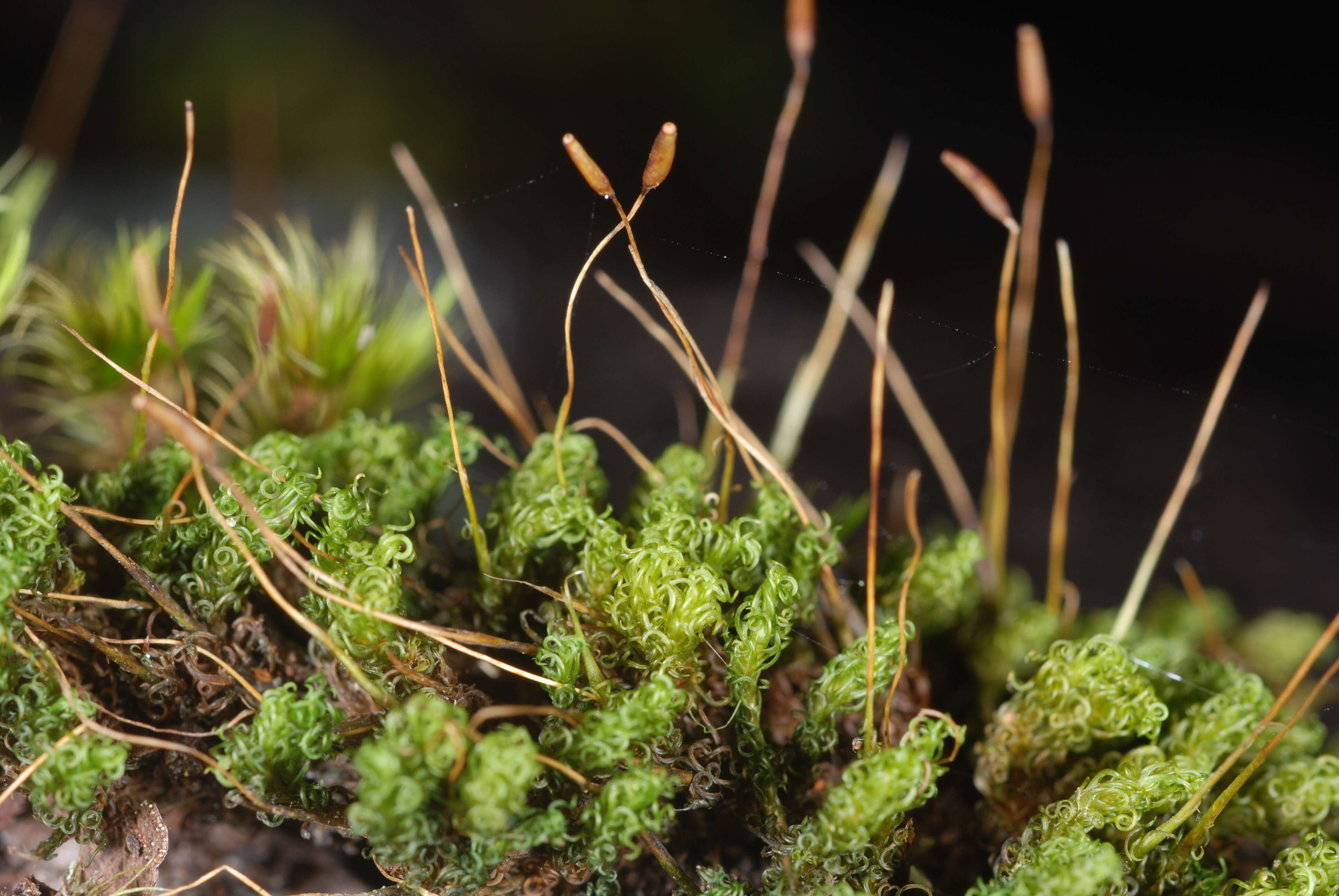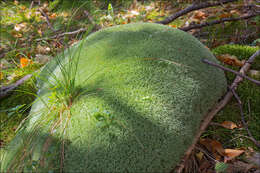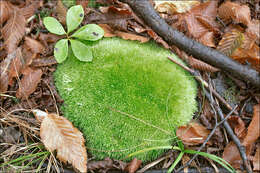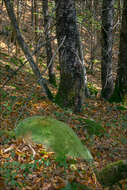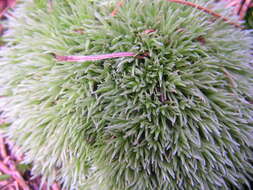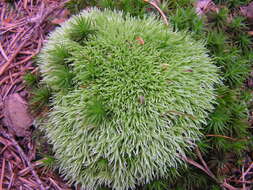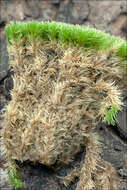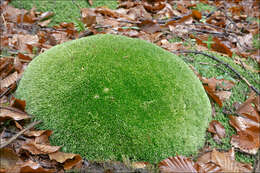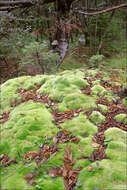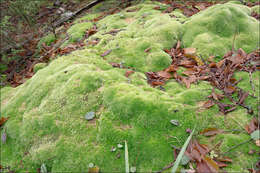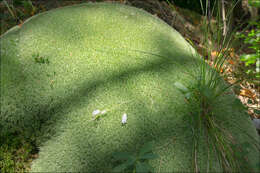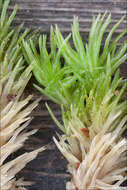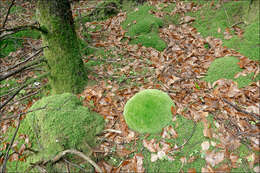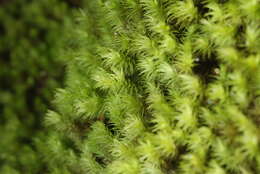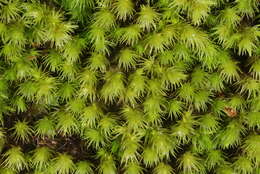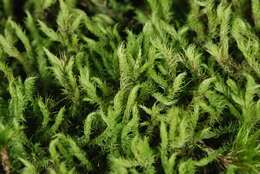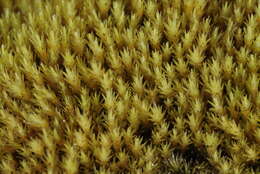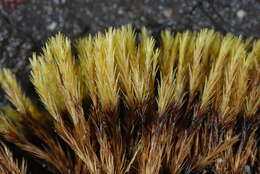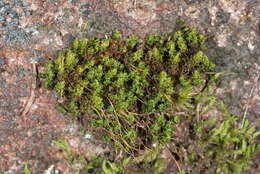Leucobryum glaucum (Hedw.), syn.: Dicranum glaucum (Hedw.),EN: Pincushion Moss, White Cushion Moss, White Moss, DE: Gemeines WeimoosSlo.: sinje bledi mah, beli mah, beluhDat.: Aug. 18. 2018Lat.: 46.362417 Long.: 13.699617Code: Bot_1152/2018_DSC04803 Habitat: mixed wood, Fagus sylvatic and Picea abies dominant trees; at the foot of a mountain; slightly inclined mountain slope, southeast aspect; calcareous, colluvial ground; mostly in shade; quite humid place; partly protected from direct rain by tree canopies; average precipitations ~ 3.000 mm/year, average temperature 6-8 deg C, elevation 700 m (2.300 feet), alpine phytogeographical region. Substratum: forest soil.Place: Lower Trenta valley between villages Soa and Trenta; right bank of river Soa; below Stemerica place, East Julian Alps, Posoje, Slovenia EC. Comment: Leucobryum glaucum is a very beautiful moss. Its distinct, quite large, 'velvety', intensive light green cushions (when moist, otherwise more whitish) are almost impossible to miss. Sometimes the cushions are in the form of more or less confluent shallow cushions, sometimes in the form of standalone, perfectly round half-domes. There exists a very similar species - Leucobryum juniperoideum (Brid.) Mll. Hal. and confusion is not impossible. It is smaller (its English common name is 'Smaller White Moss' (Ref.5)) than Leucobryum glaucum. The best and most constant difference between both species are differently shaped sporophytes. Unfortunately, they are very, very rare nowadays. I haven't seen them yet. Sterile specimens are obviously more difficult to be recognized. Nevertheless, the cushions of Leucobryum glaucum are usually significantly larger and thicker than of Leucobryum juniperoideum (Ref:2, Ref:6). The cushions found in this observation were much larger (up to 50 x 45 cm and almost 30 cm thick) than what is assumed to be characteristic for Leucobryum juniperoideum (up to 6 cm in diameter (Ref:2)). Quite moist soil in a mixed forest of Picea abies and Fagus sylvatica is also much more characteristic habitat for Leucobryum glaucum (Ref:6) than for Leucobryum juniperoideum, which grows mostly on non-basic rocks (Ref:.2). In addition, Leucobryum juniperoideum is listed in Slovenian Red list of Bryophytes and considered a rare species (marked by R). So, I believe Leucobryum glaucum is correct determination.Ref.:(1 ) I. Atherton, S. Bosanquet, M. Lawley, eds., Mosses and Liverworts of Britain and Ireland, British Bryological Society, (2010), p 403.(2) M. Nebel, G.Philippi, eds., Die Moose Baden-Wrttembergs, Vol: 1. (2000), p 131.(3) V.Wirth, R.Dll, Farbatlas Flechten und Moose, Ulmer (2000), p 237.(4)
www.illinoiswildflowers.info/mosses/plants/pincushion.html (accessed Sept.1. 2018)(5)
species.nbnatlas.org/species/NHMSYS0000310177 (accessed Sept.1. 2018)(6) J.P. Frahm, Leucobryum juniperoideum (Brid.) C.Mll. in North America, Archive for bryology, 84 (2011); available at:
publikationen.ub.uni-frankfurt.de/frontdoor/index/index/y... (accessed Sept.1. 2018)(7)
www.tandfonline.com/doi/abs/10.1179/jbr.1972.7.1.1 (accessed Sept.1. 2018)

